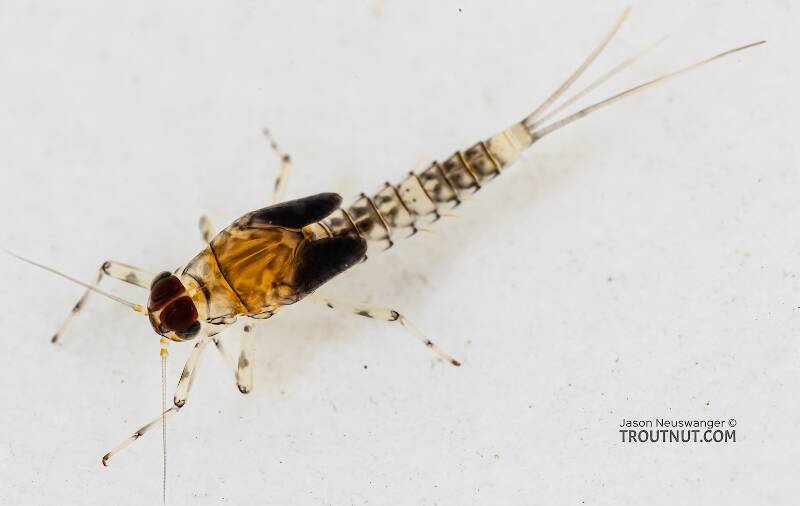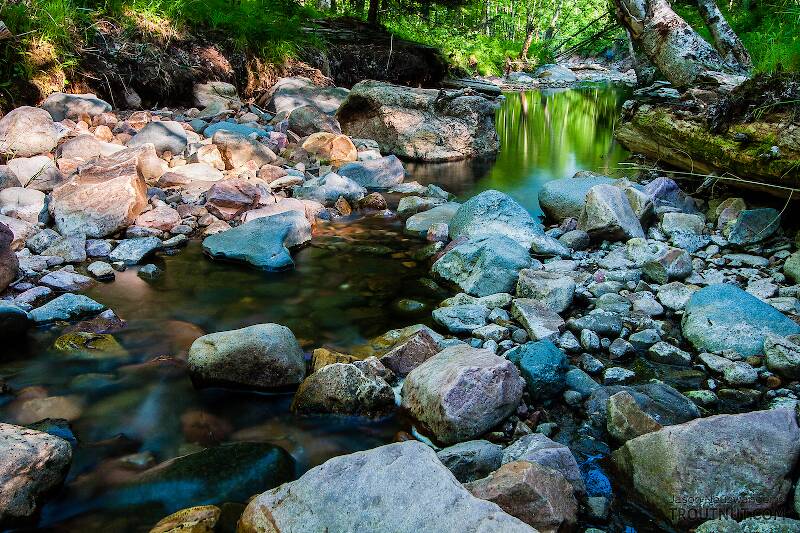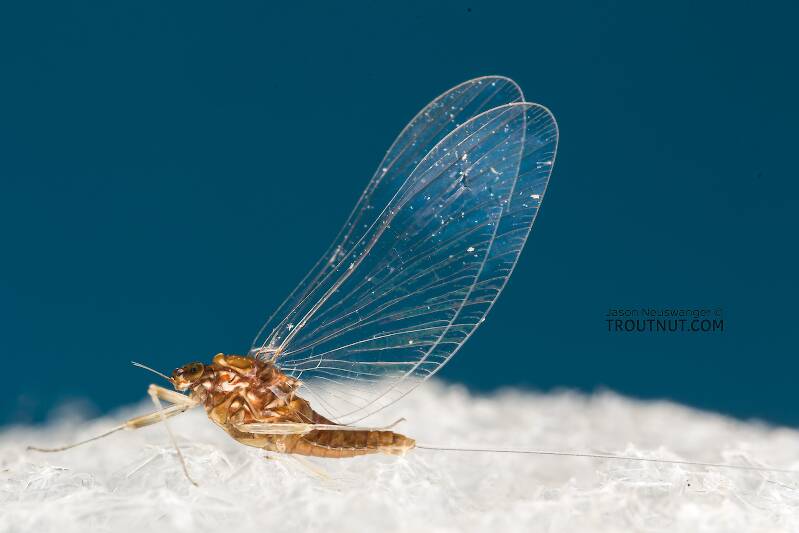
Salmonflies
Pteronarcys californica
The giant Salmonflies of the Western mountains are legendary for their proclivity to elicit consistent dry-fly action and ferocious strikes.
Featured on the forum

This is the first of it's family I've seen, collected from a tiny, fishless stream in the Cascades. The three species of this genus all live in the Northwest and are predators that primarily eat stonefly nymphs Merritt R.W., Cummins, K.W., and Berg, M.B. (2019).

Troutnut is a project started in 2003 by salmonid ecologist Jason "Troutnut" Neuswanger to help anglers and
fly tyers unabashedly embrace the entomological side of the sport. Learn more about Troutnut or
support the project for an enhanced experience here.
Little Slate-Winged Brown Quills
Like most common names,"Little Slate-Winged Brown Quill" can refer to more than one taxon. They're previewed below, along with 2 specimens. For more detail click through to the scientific names.
Mayfly Species Baetis intercalaris
These are sometimes called Little Slate-Winged Brown Quills.
Mayfly Species Baetis brunneicolor
These are very rarely called Little Slate-Winged Brown Quills.
This is the largest common species of Baetis on our trout streams, and it can hatch in incredible numbers, drawing impressive rises of selective trout.
Anglers may have read in books about Baetis hiemalis, which is now a synonym of Baetis brunneicolor. It appears to have been a name for the fall-hatching brood of this species, which was reported to prefer slow water and weedy habitat instead of the gravelly riffles of the early summer brood.
Anglers may have read in books about Baetis hiemalis, which is now a synonym of Baetis brunneicolor. It appears to have been a name for the fall-hatching brood of this species, which was reported to prefer slow water and weedy habitat instead of the gravelly riffles of the early summer brood.
Mayfly Species Plauditus dubius
These are very rarely called Little Slate-Winged Brown Quills.
This species may produce good hatches.
Mayfly Species Baetis flavistriga
These are very rarely called Little Slate-Winged Brown Quills.
This is one of the most widespread and abundant Baetis species, and it may produce fishable hatches under a variety of conditions.
This species is known in angling books by several old synonyms, including Baetis quebecensus, Baetis levitans, Baetis cingulatus, and Baetis phoebus, in addition to the correct name.
This species is known in angling books by several old synonyms, including Baetis quebecensus, Baetis levitans, Baetis cingulatus, and Baetis phoebus, in addition to the correct name.

This nymph keys to Baetis assuming the villipore is present (hard to see in my photos or scope), and within that genus it tentatively keys to the flavistriga species complex, of which Baetis flavistriga itself is by far the most common in Washington state, so that's the most likely ID.
See 2 more specimens...
Mayfly Species Acentrella turbida
These are very rarely called Little Slate-Winged Brown Quills.
Although these mayflies are tiny, in places their numbers compensate for their small size and make for excellent hatches.
Rick Hafele and Dave Hughes in Western Mayfly Hatches rate turbida as one of the three most "key" western species of Baetidae, alongside Baetis tricaudatus and Diphetor hageni. In the West, turbida is more variable in size and appearance than its eastern iteration, in keeping with the large and varied regions it inhabits. It can run as small as 3.5 mm and as large as 5 mm, the larger sizes tending to be more brownish. It is often confused with the smaller broods of Diphetor hageni, but its conical mesonotal projection, lack of hind-wings, exaggerated turbinate eyes (hence its name) and stockier build help to differentiate it.
They are often found on the water with a mix of other Baetidae mayflies, making for very challenging fishing.
Rick Hafele and Dave Hughes in Western Mayfly Hatches rate turbida as one of the three most "key" western species of Baetidae, alongside Baetis tricaudatus and Diphetor hageni. In the West, turbida is more variable in size and appearance than its eastern iteration, in keeping with the large and varied regions it inhabits. It can run as small as 3.5 mm and as large as 5 mm, the larger sizes tending to be more brownish. It is often confused with the smaller broods of Diphetor hageni, but its conical mesonotal projection, lack of hind-wings, exaggerated turbinate eyes (hence its name) and stockier build help to differentiate it.
They are often found on the water with a mix of other Baetidae mayflies, making for very challenging fishing.
See 3 more specimens...
References
- Hafele, Rick and Hughes, Dave. 2004. Western Mayfly Hatches. Frank Amato Publications.
- Merritt R.W., Cummins, K.W., and Berg, M.B. 2019. An Introduction to the Aquatic Insects of North America (Fifth Edition). Kendall/Hunt Publishing Company.


